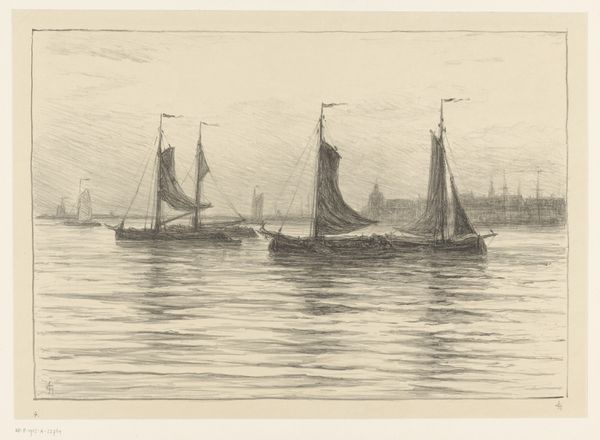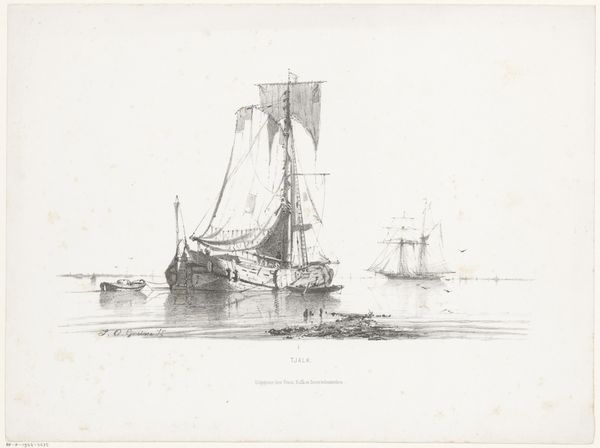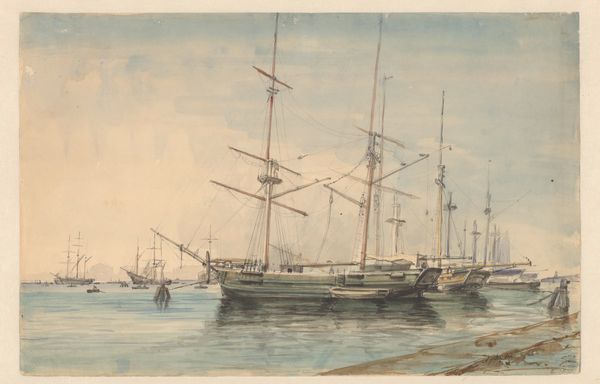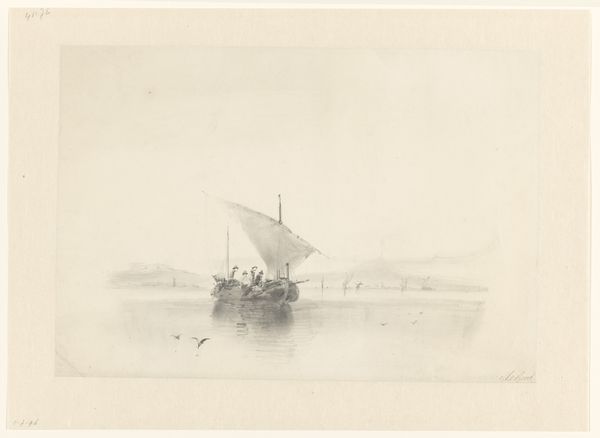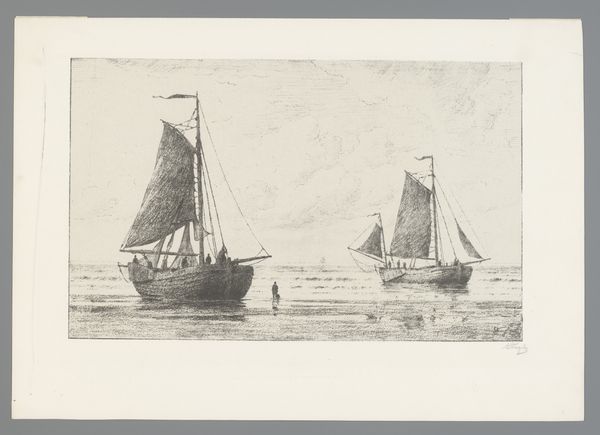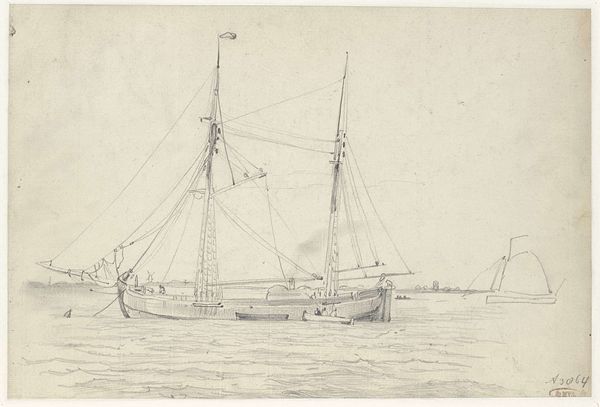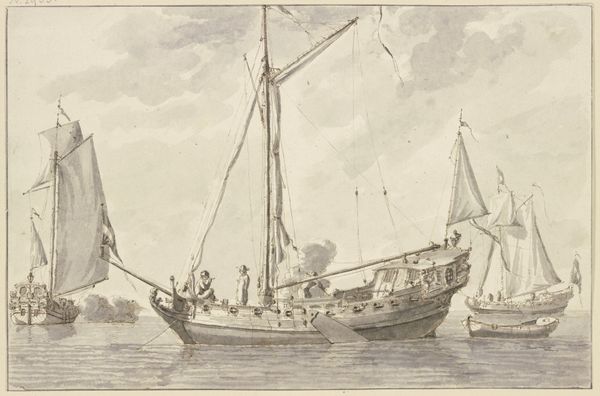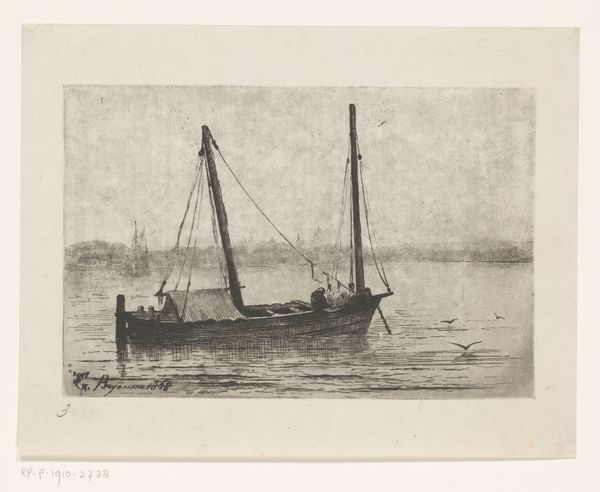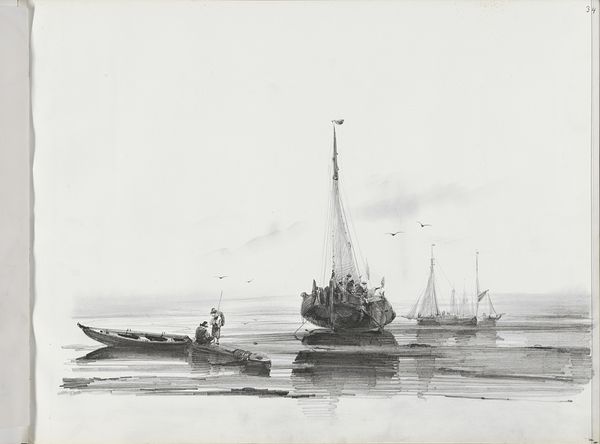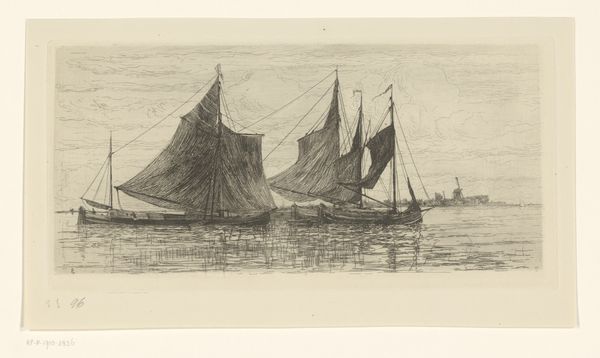
Dimensions: height 272 mm, width 365 mm
Copyright: Rijks Museum: Open Domain
Johan Conrad Greive made this artwork, "Botter", using etching, a printmaking technique that dates back to the Middle Ages. The magic of etching lies in the way the artist coaxes an image out of a metal plate. Greive would have covered a metal plate, likely copper, with a waxy, acid-resistant coating. Then, using a sharp needle, he'd scratch away the coating, revealing the metal underneath, with each line varying the pressure to create the illusion of depth and shadow. When the plate is dipped in acid, the exposed lines are eaten away, creating grooves. Ink is then forced into these lines, the surface wiped clean, and the image transferred to paper under immense pressure. The final print gives us a direct connection to Greive’s hand and eye, but it also speaks to a much wider world of labor, trade, and industrial processes. In essence, it’s a mechanically reproduced image of a traditional, handmade world. Through process, the artist captures the tension between industrial progress and the allure of simpler times.
Comments
No comments
Be the first to comment and join the conversation on the ultimate creative platform.
